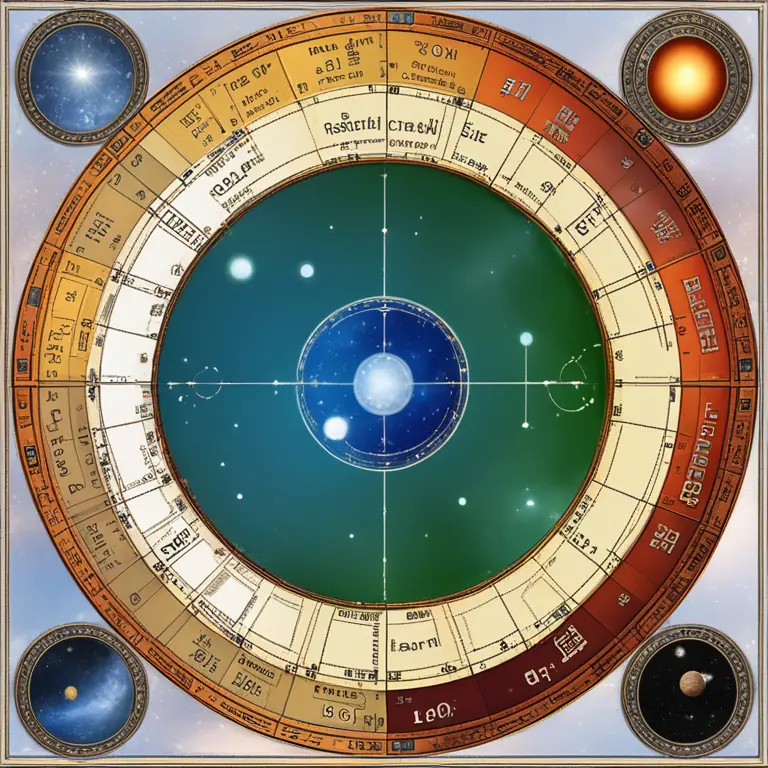
The Foundations of Astrology Houses: A Guide
Dive into the principles behind astrological houses and how they form the basis of an individual's astrological chart, impacting their life journey.
article by Priya Deshmukh
Introduction to Astrological Houses
Astrology provides a celestial road map to our personal development and potential, with the 'houses' being a crucial component of this intricate system. An astrology chart is divided into twelve segments, known as houses, which correspond to different areas of our lives. From our sense of self to our relationships, and from our career ambitions to our hidden fears, the houses lay the foundation on which the planets and signs interact and affect our earthly experiences.

The Birth Chart: A Cosmic Blueprint
To determine the houses in your astrological chart, you start by casting what is known as a 'birth chart' or 'natal chart.' This chart is a snapshot of the heavens at the exact moment of your birth, with the location of your birth as the center point. The chart is depicted as a circle, segmented into the twelve houses, and is personalized through the specific time and place of your birth. The houses are determined by the Earth's daily rotation and relate to the time of day when you were born.

Calculating Astrological Houses
Astrologers use various systems to calculate house divisions, but the most common ones include Placidus, Whole Sign, and Equal House systems. The Placidus system, widely used in Western astrology, considers the time and place of birth to generate the houses. It provides a unique shape to each house and is sensitive to latitudes. On the other hand, the Whole Sign system assigns each house to an entire sign, aligning the first house with the ascendant sign. The Equal House system uses the ascendant as the first house cusp and divides the other houses equally – each 30 degrees apart.

The Role of the Ascendant in Determining Houses
The Ascendant, or rising sign, plays a pivotal role in the layout of the astrological houses. It marks the cusp of the first house and represents the sign that was ascending on the eastern horizon at your birth time. The rest of the houses follow clockwise from this point. Your ascendant is not only the lens through which you view the world, but it also sets the tone for the subsequent houses, each associated with different aspects of your life, starting with your identity and outward expression in the first house.

Interpreting the Astrological Houses
As planetary bodies move through the zodiac, they also transit through the houses of your chart, interacting with the energies inherent in each. For example, if Saturn, a planet linked with structure and responsibility, transits your fourth house of home and family, this could be a time of reorganizing your domestic life. Beyond personal transits, knowing the current astrological shifts, like Jupiter's transit through the financial second house starting in 2024, can provide broader insights into societal values and material growth.
The Synthesis of Elements in Astrology
The houses in astrology cannot be seen in isolation. They work in concert with the zodiac signs and planetary positions to form a dynamic whole. Understanding the interaction between these elements helps to create a full picture of the individual's experiences and dispositions. For instance, the character of Mars in the tenth house of career will manifest differently when positioned in Aries versus in Cancer, revealing different paths and potentials for one's professional journey.
Published: 1/17/2024
Modified: 1/17/2024
More predictions
Come back here soon to learn more about yourself and your future


The Astrological Sign of April
Discover the dynamic astrological energies at play for those born in April, including the transition from Aries to Taurus.


Astrological Sign Compatibility Full Guide
Discover the synergy between zodiac signs in astrology to learn more about romantic, friendship, and professional compatibility.


The Influence of Astrology in Human Lives
Delve into the impact of astrology on daily life, relationships, and personal growth, and understand how celestial alignments can guide our decisions and self-awareness.